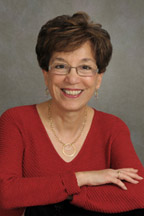
In a paper published in the Journal of Child and Adolescent Psychopharmacology, Gabrielle Carlson, MD commented on the “meteoric rise” in the use of atypical antipsychotic medications in the treatment of children with attention deficit hyperactivity disorder (ADHD) and oppositional defiant disorder (ODD). Using data from the department’s inpatient child psychiatry unit collected over the past 25 years, Dr. Carlson noted that the use of antipsychotic medications increased from about 15% of patients in earlier samples to 68.5% in more recent samples, even though the children and their behaviors remained essentially the same.
Challenging sensational accounts in the popular press that the newer antipsychotic medications are powerful agents used “off-label” by doctors to control little children, Dr. Carlson remarked that they are “not nearly as powerful as the rages they are trying to address.” She suggested that pressure from insurance companies to shorten length of stay and the reluctance of payers to support proven (but more expensive) treatments such as behavior modification and parent training may be behind the rise in use of antipsychotics. In addition, younger clinicians are not always maximizing the potential of well-studied stimulant medication for ADHD, leaving many children partially treated - a point made by the research of colleague Joseph Blader, PhD in an article published in Pediatrics in 2010. Dr. Carlson described as “ironic” the fact that the explosive and obnoxious outbursts that most often prompt the prescription of antipsychotic medications have had no “home” in the DSM, precluding them from being listed as indications for use by the FDA.
Dr. Carlson observed that there is a relationship between the decreasing time of treatment and the increasing use of atypical antipsychotics, although she could not say whether this trend will make a difference in the long-term outcomes of treatment. She concluded by expressing her wish that the antipsychotic medications, or any medication in fact, could compensate for what has been lost in terms of other forms of treatment. Were they as powerful as the popular media imply, more children might be kept out of emergency rooms, hospitals, residential programs and jail.
The issue highlighted in this commentary will be the focus of a special forum at the 60th annual meeting of the American Academy of Child and Adolescent Psychiatry in Orlando, Florida in October, addressing problems of polypharmacy, access to treatment and adequacy of care.
Dr. Carlson is Head of Child and Adolescent Psychiatry at Stony Brook University. The paper, which is titled “The Dramatic Rise in Neuroleptic Use in Children: Why Do We Do It and What Does It Buy Us? Theories from Inpatient Data 1988—2010”, was published on April 22, 2013.

